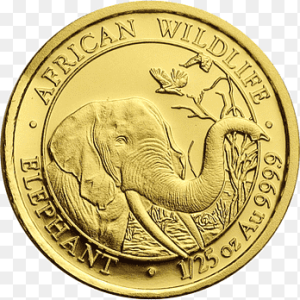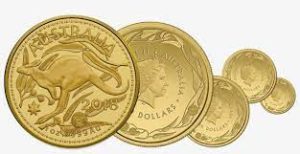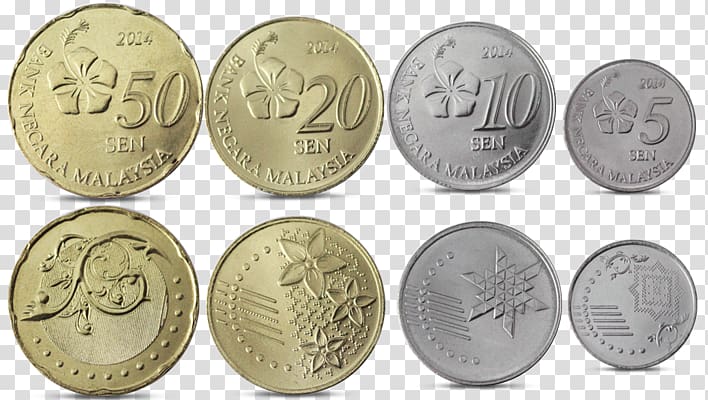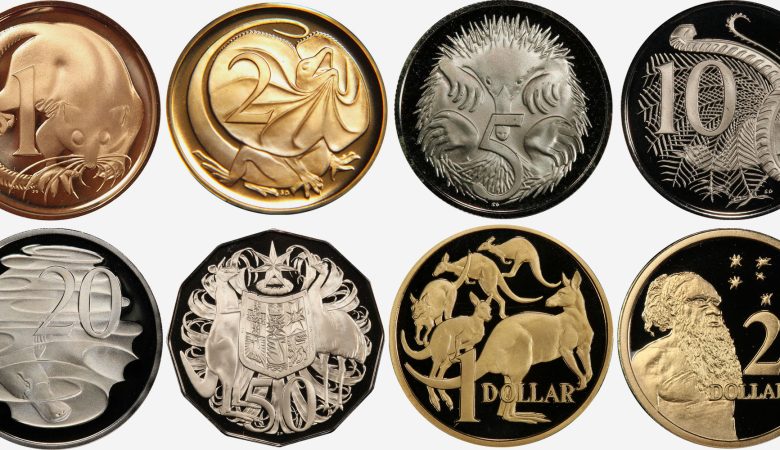Introduction:
Australia is a continent rich in species and different scenery, and it also has a rich history of coinage. We share the intriguing histories of Australian coins’ creation, patterns, and cultural importance in this investigation. Australia’s coins serve as physical reminders of the country’s rich history, both past and present, from the colonial era to contemporary minting advances.
The Shimmering Beginnings: Early Australian Coinage
The history of Australia’s coinage dates back to the early 18th-century European colonization era. The release of the “Dump” and the “Holey Dollar” raised the first murmurs of a distinct numismatic identity. These early coins represent an innovative approach to payment in the fledgling colony of New South Wales. Despite not having official approval, these hollow coins continue to be recognized artifacts of Australia’s initial economic endeavors.
Pounds, Shillings, and the Roaring Kangaroo:
In 1910, Australia’s coinage changed dramatically when the sterling system—which used pounds, shillings, and pence—was implemented. This period’s coins frequently featured the likeness of King George V, and subsequently King George VI, signifying Australia’s monarchical connections with Britain. Significantly, the kangaroo, Australia’s national emblem, was introduced on penny and halfpenny coins, signaling the country’s burgeoning identity and a clear break from conventional British images.
Decimalization: A Currency Revolution
Australia made the historic decision to switch from the intricate pound system to a decimal currency in 1966. With the introduction of the Australian Dollar (AUD), a variety of coins with images of famous people and native animals were also released. The colorful images included animals like kangaroos, platypus, and lyrebirds, signifying Australia’s unique biodiversity and presenting the world to a unique decimal currency system.
Royal Portraits and the Winds of Change:
Australian coins have traditionally included the likenesses of the current British monarchs, signifying the country’s historical connections to the Crown. Since its 1953 premiere, Queen Elizabeth II’s effigy has evolved subtly, reflecting both the passage of time and the ongoing relationship with the British royalty. These royal portraits, which have changed with every reign, represent the evolution of Australia’s numismatic heritage.


Indigenous Culture Takes Center Stage:
Australian coins have included the rich tapestry of Indigenous culture in recent decades. Through partnerships with Indigenous artisans, mints have created coins that are embellished with spiritual symbolism, traditional artwork, and elaborate Dreamtime narrative. These coins, which incorporate Indigenous stories into the very fabric of the country’s coinage, mark a significant step toward reconciliation and acknowledgment of Australia’s First Nations people.
Commemorating Milestones: A Tribute in Metal
Australia’s coins eloquently convey the country’s fondness for marking important anniversaries. The nation’s mints produce commemorative coins to mark milestones, anniversaries, and historical occurrences. Coins honoring the Olympic Games in Sydney in 2000 and the centennial of the Australian and New Zealand Army Corps’ arrival at Gallipoli are two notable examples.
Wildlife Wonders: The Australian Fauna Series
Coins that appeal to both collectors and environment lovers highlight Australia’s distinctive and varied biodiversity. Australia’s dedication to promoting its amazing wildlife is demonstrated by the Australian wildlife Series, which has coins with representations of koalas, kookaburras, and other natural creatures. These coins, which are often produced at the Perth Mint, add to Australia’s reputation for creating numismatic jewels that are both aesthetically pleasing and extremely desirable.
Technological Marvels in Metal:
Australia’s mints have welcomed technological advancements in coin manufacture in addition to artistic attempts. When it comes to introducing cutting-edge methods like colorization, holography, and distinctive characteristics into its coins, the Perth Mint has led the way. These technical wonders take Australian coins to a new degree of complexity that appeals to collectors worldwide, from bright moon coins to carefully chosen gilded pieces.
The Allure of Precious Metals for Investment:
Australia is well known for producing bullion coins of superior quality that are in high demand among investors and collectors. In the precious metals market, the Perth Mint’s Gold Kangaroo, Silver Kookaburra, and Platinum Platypus series are highly valued. These coins are reliable investment choices for anyone wishing to diversify their portfolios with tangible precious metals, in addition to showcasing recognizable Australian motifs.


Conclusion:
The tale told on Australia’s coins is as colorful and varied as the continent’s many landscapes. Australian coins capture the essence of a country, from the early days of holey dollars to the modern manifestations of Indigenous artistic expression and technical progress. Discovering more than just money when we explore Australia’s numismatic treasures reveals a palpable symbol of the country’s history, variety, and ongoing influence on the world scene.




